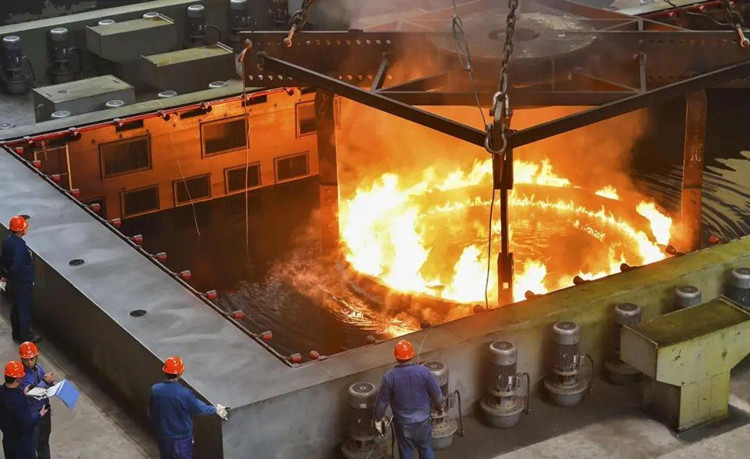- tyler@kirail.com
- +86 15603721115
Water is a common medium for quenching and cooling for forgings. So what are the disadvantages of water as a cooling medium for quenching for forgings?

1) In the typical area of the austenite isothermal transformation diagram, that is, around 500-600℃, water is in the steam film stage, and the cooling rate is not fast enough, which often causes uneven cooling and insufficient cooling of forgings and forms "soft spots". In the martensitic transformation system, that is, around 300-100℃, water is in the boiling stage. If the cooling rate is too fast, it is easy to make the martensitic transformation rate too fast and produce great internal stress, causing deformation or even cracking of forgings.
2) Water temperature has a great influence on cooling capacity and is sensitive to changes in ambient temperature. As the water temperature increases, the cooling capacity drops sharply, and the temperature area of the maximum cooling rate moves to the low temperature zone. When the water temperature exceeds 30℃, the cooling rate in the range of 500-600℃ is significantly reduced, which often leads to hardening of forgings, but has little effect on the cooling rate in the martensitic transformation range. When the water temperature rises to 60℃, the cooling rate will decrease by about 50%.
3) When the water contains more gas (such as newly replaced water), or when insoluble impurities such as oil, soap, mud, etc. are mixed in the water, its cooling capacity will be significantly reduced, so special attention should be paid during use and management.
According to the cooling characteristics of water, generally H-grade water can be used for quenching and cooling of carbon steel forgings with small cross-sectional dimensions and simple shapes. When quenching, it is also necessary to pay attention to: keep the water temperature below 40℃, preferably between 15-30℃, and keep the water or liquid circulating to destroy the vapor film on the surface of the forging. You can also use the method of swinging the workpiece (or moving the workpiece up and down) to destroy the vapor film during quenching, increase the cooling rate between 500-650℃, control the cooling conditions, and avoid soft spots.